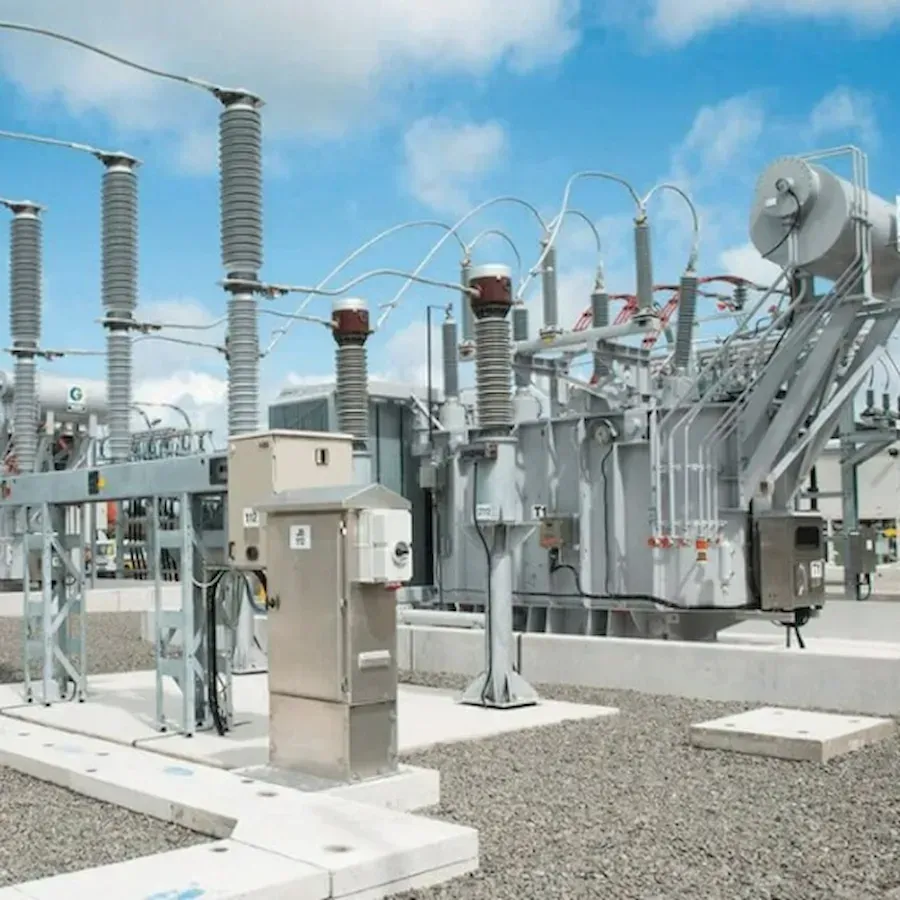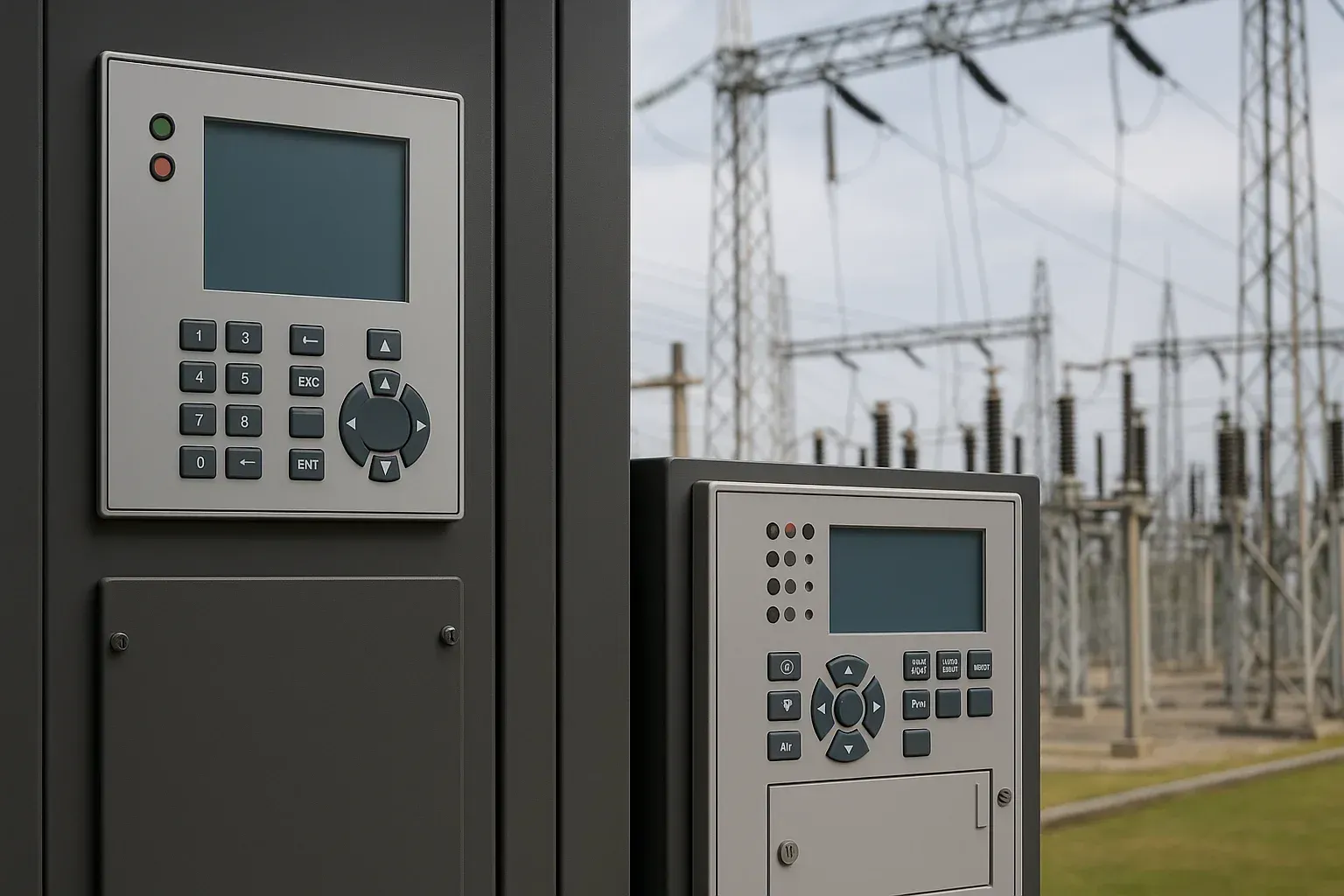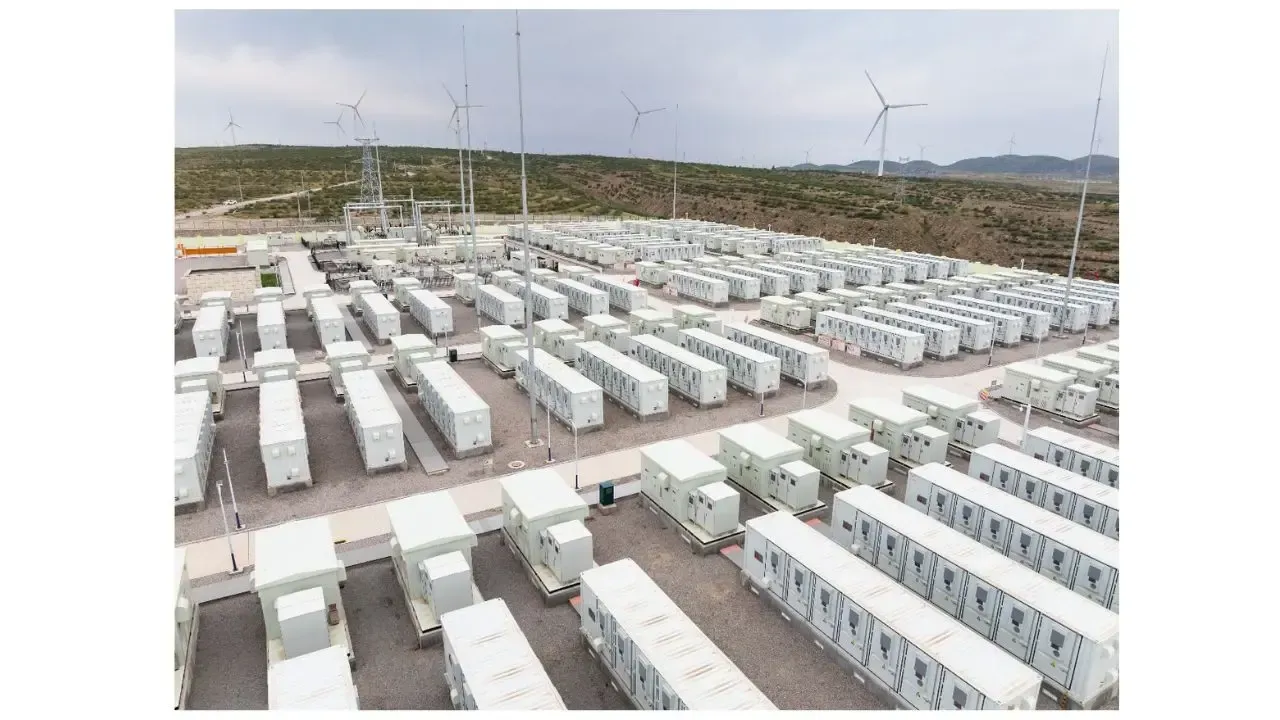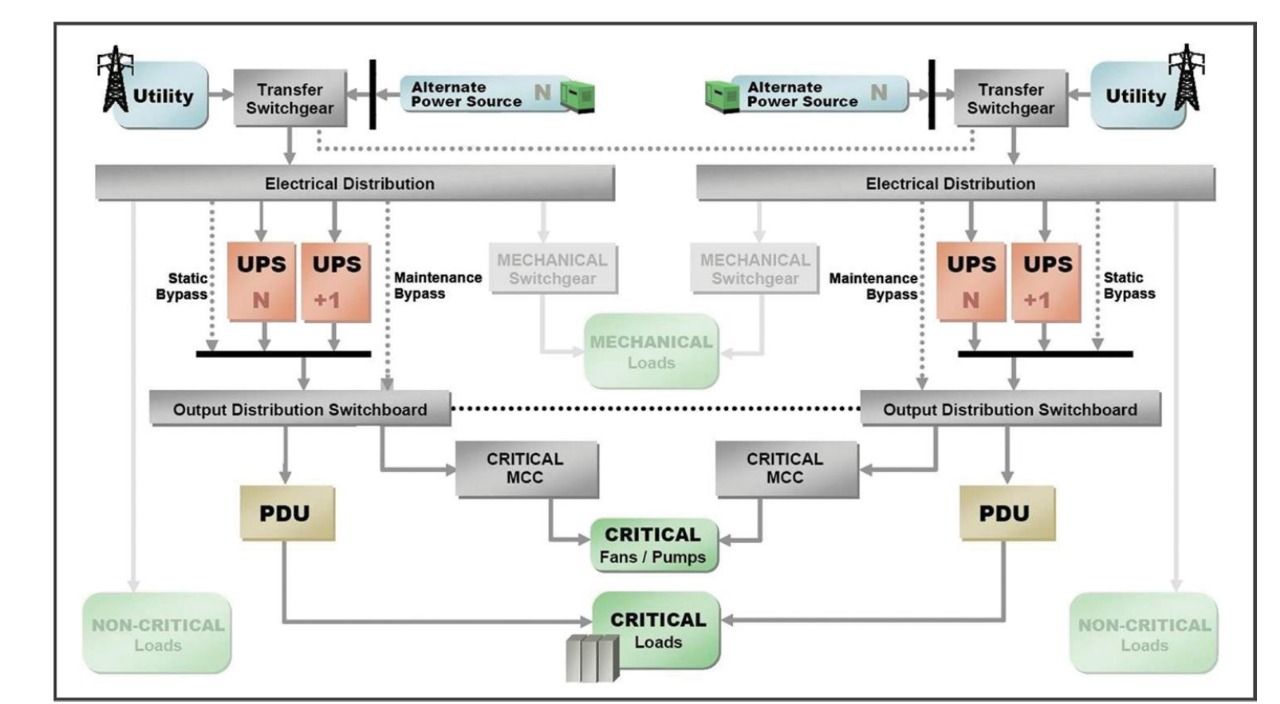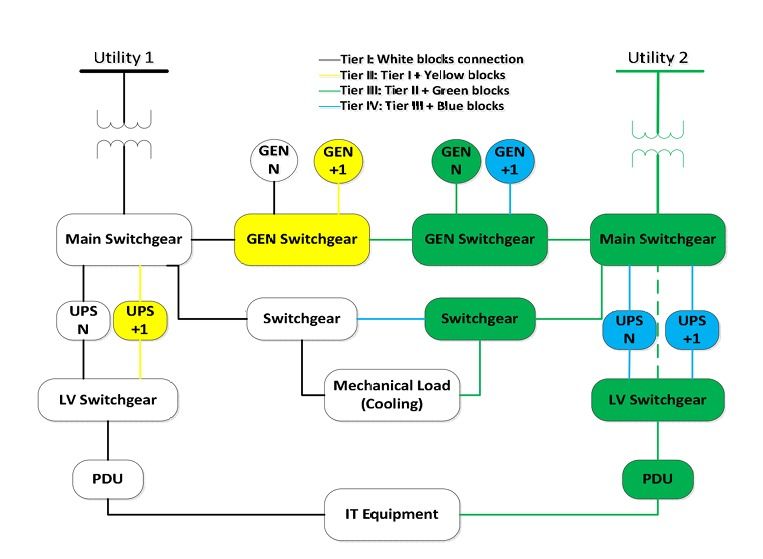A Coordinated Electric System Interconnection Review—the utility’s deep-dive on technical and cost impacts of your project.
Challenge: Frequent false tripping using conventional electromechanical relays
Solution: SEL-487E integration with multi-terminal differential protection and dynamic inrush restraint
Result: 90% reduction in false trips, saving over $250,000 in downtime
Mastering Synchronous Generator Modeling for Grid Stability: Insights from IEEE 1110-2019 and Keentel Engineering
August 22, 2025 | Blog
Introduction
Synchronous generators remain the backbone of bulk electric power systems. While renewable penetration and inverter-based resources (IBRs) continue to increase, synchronous generators still provide essential inertia, reactive power support, and short-circuit strength. To ensure long-term power system stability, accurate and validated generator models are essential. The IEEE 1110 guidance reinforces the need for precise representation of every synchronous generator model, establishing a more consistent baseline for planning studies and operational analysis.
The IEEE 1110-2019 Guide for Synchronous Generator Modeling Practices and Applications in Power System Stability Analyses provides comprehensive recommendations for developing, validating, and applying generator models in both planning and operational studies.
At Keentel Engineering, we bring this IEEE standard into practice through advanced simulation studies, model validation, and NERC compliance support. Our expertise spans power system studies, transmission planning, renewable energy integration, and regulatory compliance — making us a trusted partner for utilities, developers, and grid operators.
This article explores the key themes of IEEE 1110-2019,
outlines best practices in synchronous generator modeling, and demonstrates how Keentel Engineering’s services align with these industry-leading guidelines.
The Role of Synchronous Generators in Modern Grids
Grid Inertia and Frequency Response
Synchronous machines inherently contribute grid inertia, stabilizing system frequency during disturbances. They act as the first line of defense against sudden events such as load shedding or generator tripping. This inertia is critical in modern power system studies, where stability margins are shrinking with higher renewable penetration.
Voltage and Reactive Power Support
Excitation systems in synchronous generators control reactive power output and maintain voltage stability. For accurate results, dynamic models must capture both transient and steady-state responses. This ensures proper voltage stability analysis, especially when integrated with renewable resources and inverter-based technologies.
System Protection and Short-Circuit Strength
Synchronous generator models directly influence fault current levels, impacting short-circuit strength. Accurate representation of subtransient reactance and machine time constants is essential for
protection and relay coordination, ensuring reliable system operation and compliance with grid codes.
IEEE 1110-2019 Overview
The IEEE 1110-2019 Guide for Synchronous Generator Modeling builds on decades of research and practical application in dynamic studies. Its objectives include defining best practices for generator model development, standardizing data inputs, and strengthening validation processes. These recommendations support industry expectations for MOD-033 validation, ensuring that modeled generator performance aligns with actual grid behavior and enhances the reliability of system-level studies. Its primary objectives include:
- Defining best practices for synchronous generator modeling in transmission and operational studies.
- Standardizing generator parameters and data sets for dynamic system studies.
- Providing robust model validation methods using field test results, PMU data, and staged disturbance analysis.
- Addressing key applications in stability studies — including small-signal stability, transient stability, and long-term grid reliability.
Key Highlights of IEEE 1110-2019
- Model Classes: Synchronous generator models are categorized into classical models, detailed d–q axis models, and subtransient models for short-circuit strength and protection studies.
- Excitation and Governor Systems: IEEE 1110-2019 emphasizes accurate integration of excitation system models and governor models for realistic voltage and frequency response.
- Validation Methods: Recommended approaches include field testing, phasor measurement unit (PMU) analysis, and staged event simulations to ensure accuracy.
- Applications: Central to dynamic studies for power system planning, real-time operations, and NERC compliance studies.
Generator Modeling Fundamentals
Classical Model
Represents the synchronous generator as a constant voltage source behind transient reactance.
This model is widely used for large-scale transient stability studies, though it lacks accuracy for fast dynamic responses.
d–q Axis Model
Separates generator behavior into direct (d-axis) and quadrature (q-axis) components.
Captures salient pole effects, excitation system response, and damper winding dynamics—making it suitable for detailed power system stability analysis.
Subtransient Model
Includes subtransient reactances (Xd’’, Xq’’), which are essential for short-circuit studies and protection system coordination.
This model provides higher fidelity in fault current analysis and protection relay design.
Time Constants and Parameters
Open-circuit time constants (Tdo, Tqo) define transient decay behavior, while damper winding parameters influence oscillatory stability.
Accurate parameterization is critical for dynamic simulation and NERC compliance studies.
Control Systems in Modeling
Synchronous generator models must always be paired with their associated control systems to ensure accurate power system stability analysis:
- Excitation System Models – These regulate generator voltage and reactive power output. The IEEE 421.5 standard defines approved exciter models widely used in NERC compliance studies and dynamic simulations.
- Governor/Turbine Models – These control real power output and system frequency response. Variations exist for steam, gas, and hydro turbine governors, making proper selection crucial for frequency stability analysis.
- Power System Stabilizers (PSS) – These dampen oscillations by providing supplementary input to excitation systems. PSS models are essential for small-signal stability studies and inter-area oscillation damping.
The IEEE 1110-2019 Guide emphasizes that neglecting control system modeling can lead to inaccurate generator stability results, flawed planning studies, and non-compliance with industry standards.
Model Validation Practices
The IEEE 1110-2019 guide outlines robust model validation practices to ensure accuracy in synchronous generator models and compliance with NERC MOD-032/033 requirements.
Key methods include
- Field Testing – Applying small perturbations (bump tests) to excitation and governor systems to verify system response.
- Phasor Measurement Units (PMUs) – Capturing wide-area dynamic grid responses during real-time disturbances for comparison with modeled results.
- Event Replay Studies – Comparing simulation outputs with actual disturbance data to validate model performance.
At
Keentel Engineering, we integrate field measurements with advanced simulation platforms such as PSS®E, TSAT, and PSCAD to ensure generator dynamic models align with real-world system behavior. This process helps utilities, developers, and grid operators meet both reliability and compliance standards.
See Keentel's PSCAD Power System Studies Case Studies
Applications in Stability Studies
The IEEE 1110-2019 Guide for Synchronous Generator Modeling links generator dynamic models to several essential power system stability studies:
- Transient Stability – Simulation of large disturbances (e.g., faults, generator trips). The accuracy of generator models directly impacts clearing times and oscillation damping.
- Small-Signal Stability – Analysis of oscillatory modes using eigenvalue analysis, which is critical for inter-area oscillations in large interconnected grids.
- Voltage Stability – Generator reactive power limits influence long-term voltage collapse risk and reliability.
- Frequency Stability – Governor and inertia models determine the grid’s ability to respond to sudden frequency deviations and maintain balance.
Challenges and Emerging Issues
High Penetration of Renewables
As synchronous generators retire, fewer “anchors” exist for overall grid stability. This creates new challenges as hybrid power systems must account for synchronous + inverter-based resource (IBR) interactions, particularly in renewable-rich regions.
NERC Compliance Requirements
Generator Owners (GOs) are required to submit validated dynamic models for registration. Standards such as PRC-019, PRC-024, MOD-032, and MOD-033 directly reference synchronous generator models and validation practices, making compliance an essential part of planning and operations.
Cyber-Physical Considerations
With excitation and governor systems increasingly relying on digital controls, there is a growing need for cybersecurity measures and firmware validation to protect against both operational errors and potential threats. Ensuring integrity of these digital systems is now a central part of generator model management.
Keentel Engineering’s Services in Generator Modeling
At Keentel Engineering, we provide a comprehensive suite of generator modeling services aligned with IEEE 1110-2019 to help utilities, renewable developers, and asset owners ensure grid stability and compliance. Our capabilities cover detailed model development, control system integration, and dynamic study support. This approach allows us to combine advanced generator engineering practices with robust validation workflows to meet evolving NERC and utility requirements.
Model Development & Validation
- Development of detailed d-q axis and subtransient synchronous generator models.
- Integration of excitation system, governor, and Power System Stabilizer (PSS) models.
- Field testing and PMU-based validation for accurate dynamic response.
Simulation & Study Support
- Transient stability, small-signal stability, and voltage stability analyses.
- Black start capability assessments to support resilience planning.
- Protection coordination and fault studies to align with system protection schemes.
NERC Compliance Support
- Assistance with MOD-032, MOD-026, MOD-027, MOD-033 model submissions.
- Compliance studies for PRC-019, PRC-024, PRC-023, PRC-025, and PRC-027.
- Full audit preparation and evidence packages to ensure successful NERC audit outcomes.
Software Expertise
- Experience across industry-standard tools including PSS®E, PSCAD/EMTDC, TSAT, and DigSILENT PowerFactory.
- MATLAB/Simulink for advanced custom model development.
Conclusion: Strengthening Grid Reliability with IEEE 1110-2019
The IEEE 1110-2019 standard provides a critical foundation for synchronous generator modeling, ensuring that system planning and operational studies are based on accurate and validated models. As power grids evolve with increasing renewable integration and inverter-based resources (IBRs), validated generator models are essential for capturing real-world dynamics, maintaining grid reliability, and ensuring compliance with NERC standards.
At Keentel Engineering, we apply these guidelines to deliver reliable, compliant, and future-ready solutions. Whether you are a utility, renewable developer, or system operator, our expertise in generator modeling services, dynamic stability studies, and NERC compliance support strengthens your path toward a resilient and reliable power grid.
👉 Learn more about our specialized services in
Power System Studies and
NERC Compliance.
Frequently Asked Questions
General Concepts – IEEE 1110-2019 and Generator Modeling
Q1. What is IEEE 1110-2019?
A: IEEE 1110-2019 is the IEEE Guide for Synchronous Generator Modeling Practices and Applications in Power System Stability Analyses. It provides detailed recommendations for generator model development, validation, and application in stability studies to ensure accuracy and consistency across planning and operational assessments.
Q2. Why are synchronous generator models important?
A: Accurate synchronous generator models ensure that power system studies reflect real-world dynamics. This is critical for grid stability, reliability, fault analysis, and protection coordination.
Q3. What are the main types of generator models?
A: The three primary generator modeling approaches are:
- Classical Models – Simplified, suitable for large-scale stability simulations.
- d-q Axis Models – Capture detailed dynamic responses.
- Subtransient Models – Critical for short-circuit and protection studies.
Q4. How do synchronous generators support grid stability?
A: Synchronous machines contribute:
- Inertia to stabilize frequency during disturbances.
- Reactive power and voltage support through excitation systems.
- Short-circuit strength for reliable fault current contribution.
Q5. How do inverter-based resources (IBRs) affect generator modeling?
A: The rise of inverter-based resources reduces traditional system inertia and reactive strength. This makes hybrid stability studies—incorporating both synchronous generators and IBR dynamics—essential for modern grid reliability. Learn more about engineering responsibilities of IBR generator owners under IEEE 2800-2022.
Technical Details – Parameters, Controls, and IEEE 1110-2019 Enhancements
Q6. What parameters define synchronous generator dynamics?
A: Key parameters include:
- Reactances (Xd, Xq) – represent steady-state machine characteristics.
- Subtransient reactances (Xd’’, Xq’’) – crucial for short-circuit studies and fault analysis.
- Time constants (Tdo, Tqo) – define transient decay and oscillatory stability.
These parameters must be modeled accurately to ensure reliable power system stability analysis.
Q7. What role do excitation systems play in generator modeling?
A: Excitation system models regulate voltage and reactive power output, directly affecting voltage stability studies. IEEE 421.5 defines standardized exciter models used in dynamic simulations.
Q8. Why include governor models in generator studies?
A: Governor models control frequency response by adjusting real power output during disturbances. They are essential for frequency stability analysis and compliance with NERC standards such as PRC-019 and PRC-024.
Q9. What is the function of a Power System Stabilizer (PSS)?
A: A PSS model provides damping of oscillatory modes by applying supplementary signals to the excitation system. It is critical for small-signal stability studies and wide-area oscillation control in large interconnected grids.
Q10. How does IEEE 1110-2019 differ from earlier generator modeling guides?
A: The IEEE 1110-2019 standard:
- Expands validation techniques, including PMU-based validation and event replay.
- Incorporates modern simulation tools (PSSE, PSCAD, DigSILENT).
- Strengthens integration with NERC compliance requirements for generator owners and operators.
Validation and Testing – Ensuring Accurate Synchronous Generator Models
Q11. How are synchronous generator models validated?
A: Models are validated using field testing, phasor measurement unit (PMU) data analysis, and event replay simulations. These methods confirm that simulated results match actual system responses, ensuring compliance with IEEE 1110-2019 and NERC MOD-032/033 standards.
Q12. What is a bump test in generator modeling?
A: A bump test applies a small input change to the excitation system or governor controls to analyze dynamic response. It helps engineers fine-tune generator models for transient stability studies and identify any parameter mismatches.
Q13. How does PMU data support model validation?
A: PMUs (Phasor Measurement Units) capture real-time disturbance responses at sub-second resolution. This high-fidelity data allows for model tuning, calibration, and verification of generator dynamics, ensuring accuracy in power system stability analysis.
Q14. Why is validation critical for generator models?
A: Without validation, dynamic simulations may misrepresent system behavior, leading to incorrect operational decisions, poor protection coordination, and potential grid instability. Validated models reduce risks during transient, small-signal, and frequency stability studies.
Q15. What tools are used for model validation in power systems?
A: Widely used platforms include:
- PSSE (Siemens PTI)
- TSAT (Transient Security Assessment Tool)
- PSCAD/EMTDC (for electromagnetic transient simulations)
- DigSILENT PowerFactory
- MATLAB/Simulink (for custom model development)
Each tool supports compliance-grade studies required by WECC and NERC reliability standards.
Applications in Stability Studies
Q16. What is transient stability analysis?
A: Transient stability analysis studies how a power system responds to large disturbances such as faults, generator trips, or sudden load changes. It determines whether synchronous generators and inverter-based resources can remain connected without losing synchronism.
Q17. What is small-signal stability?
A: Small-signal stability analysis evaluates oscillatory modes and damping ratios in the power grid using linearized models. It is critical for inter-area oscillations, especially in grids with high renewable penetration.
Q18. How do generators affect voltage stability?
A: Generators impact long-term voltage stability through their reactive power limits, excitation system response, and control strategies. Accurate generator models ensure reliable voltage collapse risk assessment in both planning and operational studies.
Q19. What is frequency stability?
A: Frequency stability is the grid’s ability to maintain frequency within safe limits following sudden generation-loss or load imbalance events. It depends on governor models, system inertia, and fast frequency response (FFR) from generators and IBRs.
Q20. What is black start analysis?
A: Black start analysis examines how generators and other resources can re-energize a system after a total or partial blackout, without relying on external power sources. It involves sequencing, load restoration strategies, and verifying generator restart capability.
Compliance and Industry Relevance
Q21. What NERC standards reference generator models?
A: Key NERC standards that reference synchronous generator dynamic models include MOD-032 (data collection), MOD-033 (model validation), PRC-019 (excitation system limits), and PRC-024 (ride-through requirements). These standards ensure accurate modeling, compliance, and reliability in power system studies.
Q22. Why must Generator Owners (GOs) validate models?
A: Generator model validation is required to demonstrate NERC compliance and to ensure reliable integration of synchronous machines into planning and operational studies. Validation helps utilities and ISOs confirm that submitted models match field-tested behavior, reducing risks of instability.
Q23. How does Keentel Engineering help with compliance?
A: Keentel provides end-to-end NERC compliance support — from preparing validated models and generating evidence packages to assisting with audit readiness. Our team also ensures seamless submission under MOD-032/033 and PRC standards.
Q24. What are the risks of poor generator modeling?
A: Poorly developed or unvalidated models can result in inaccurate power system studies, relay miscoordination, instability risks, and failed compliance audits. This exposes Generator Owners and Transmission Operators to reliability violations and financial penalties.
Q25. How often should generator models be updated?
A: Generator dynamic models should be updated periodically, especially after equipment upgrades, control system changes, excitation/governor modifications, or firmware updates. Regular updates ensure continued NERC compliance and reliable simulation results.
Keentel Engineering Services
Q26. What generator modeling software does Keentel use?
A: Keentel Engineering uses industry-leading generator modeling and power system simulation software such as PSSE, TSAT, PSCAD, DigSILENT PowerFactory, and MATLAB/Simulink. These tools ensure precise dynamic modeling, stability analysis, and compliance validation.
Q27. Does Keentel offer field testing services?
A: Yes. We coordinate field testing services with specialized testing crews to collect real-time operational data. This data is then used for model validation, calibration, and compliance evidence in alignment with IEEE and NERC standards.
Q28. Can Keentel support renewable developers?
A: Absolutely. Keentel provides hybrid stability studies that combine synchronous generators with inverter-based resources (IBRs) such as solar, wind, and battery energy storage. Our services help renewable developers ensure compliance and reliable grid integration.
Q29. Does Keentel provide training in generator modeling?
A: Yes. We offer customized training programs and workshops for utilities, renewable developers, and grid operators. Training covers IEEE 1110-2019 best practices, synchronous generator dynamic modeling, NERC compliance requirements, and simulation tools like PSSE and PSCAD.
Q30. How does Keentel ensure future-ready solutions?
A: Keentel ensures future-ready generator modeling solutions by aligning with IEEE 1110-2019 guidelines, integrating NERC compliance frameworks, and adapting models for evolving grids with higher renewable penetration and inverter-based generation.
As the grid evolves, so must your models. The IEEE 1110-2019 guide sets the benchmark for synchronous generator modeling, but success depends on accurate implementation, validation, and compliance.
At Keentel Engineering, we provide
- Advanced generator modeling and validation services
- End-to-end NERC compliance support (PRC, MOD, and related standards)
- Expertise in renewable + synchronous hybrid studies
- Custom training and workshops for utilities and developers
Don’t risk non-compliance, inaccurate studies, or unreliable system performance. Work with a partner who understands both the technical and regulatory landscape.
Explore our services:
NERC Compliance Services |
Power System Studies |
Substation Design Services

About the Author:
Sonny Patel P.E. EC
IEEE Senior Member
In 1995, Sandip (Sonny) R. Patel earned his Electrical Engineering degree from the University of Illinois, specializing in Electrical Engineering . But degrees don’t build legacies—action does. For three decades, he’s been shaping the future of engineering, not just as a licensed Professional Engineer across multiple states (Florida, California, New York, West Virginia, and Minnesota), but as a doer. A builder. A leader. Not just an engineer. A Licensed Electrical Contractor in Florida with an Unlimited EC license. Not just an executive. The founder and CEO of KEENTEL LLC—where expertise meets execution. Three decades. Multiple states. Endless impact.
Services

Let's Discuss Your Project
Let's book a call to discuss your electrical engineering project that we can help you with.

About the Author:
Sonny Patel P.E. EC
IEEE Senior Member
In 1995, Sandip (Sonny) R. Patel earned his Electrical Engineering degree from the University of Illinois, specializing in Electrical Engineering . But degrees don’t build legacies—action does. For three decades, he’s been shaping the future of engineering, not just as a licensed Professional Engineer across multiple states (Florida, California, New York, West Virginia, and Minnesota), but as a doer. A builder. A leader. Not just an engineer. A Licensed Electrical Contractor in Florida with an Unlimited EC license. Not just an executive. The founder and CEO of KEENTEL LLC—where expertise meets execution. Three decades. Multiple states. Endless impact.
Leave a Comment
We will get back to you as soon as possible.
Please try again later.
Related Posts



